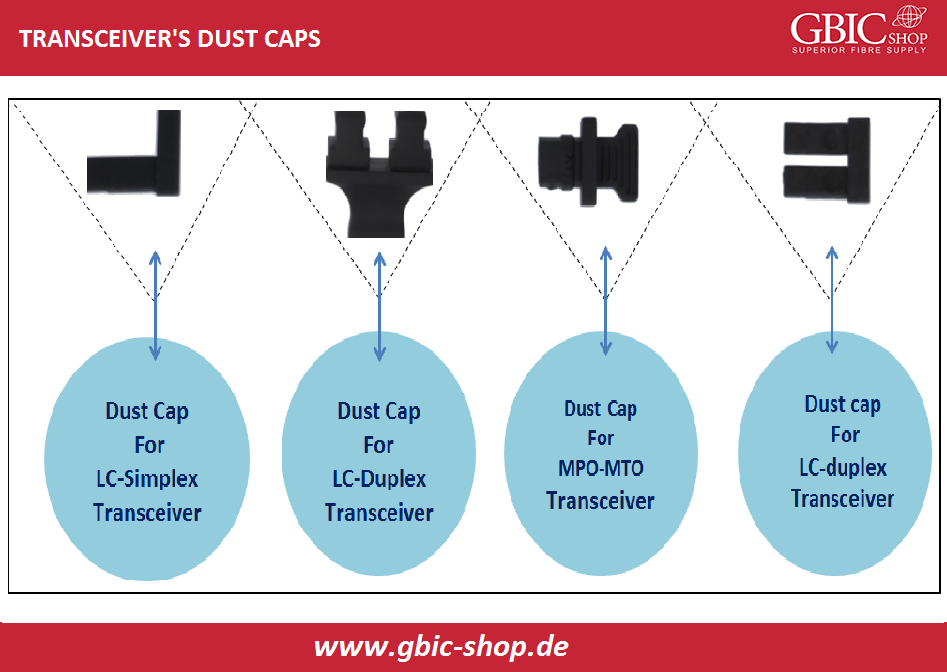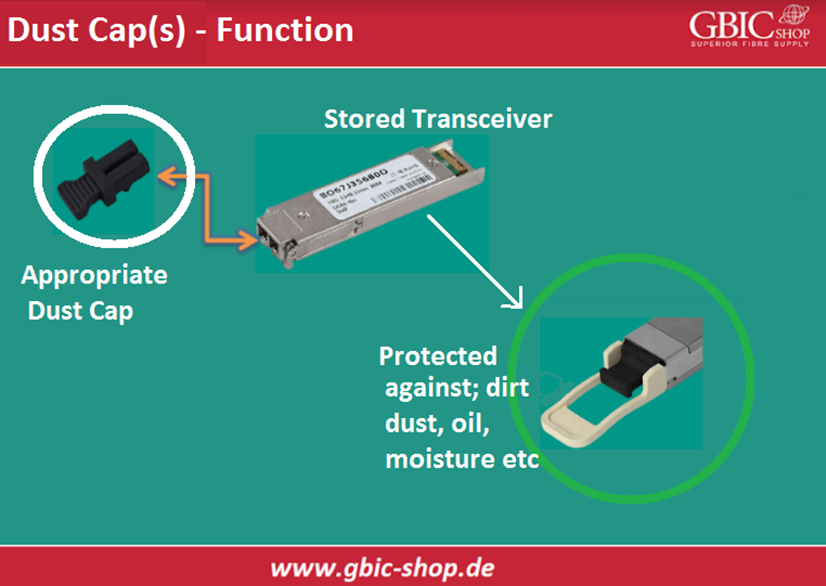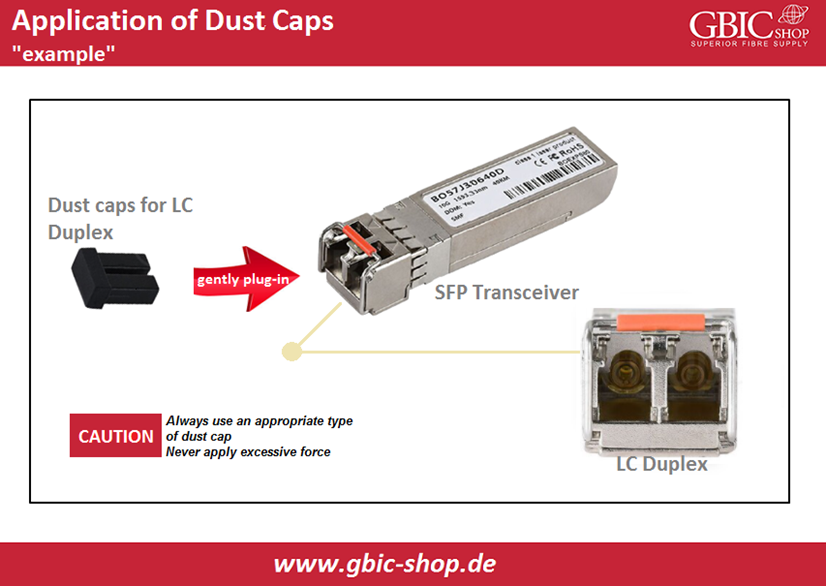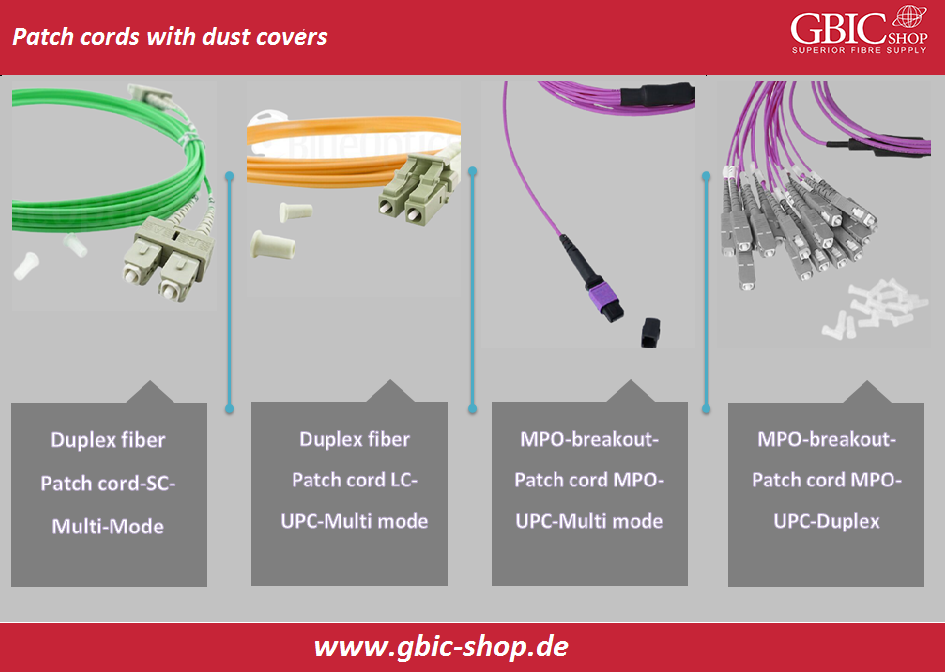Optical fiber cables and connectors play an essential role in data transmission. Optical fibers are used to transfer light signals across a link which is later transformed into an electrical signal through transceivers, switches, or routers.
Dust caps are small plastic consumables that are used in every part of an optical fiber network. As the name is self-explanatory, the main purpose of dust caps is to protect the furnished or polished fiber end of the cable when it is not in use and plugged. In addition to fiber, these plugs are also used to prevent the open ports of transceivers, switches, and routers.

So, along with these features, the position of the dust cap cannot be de-emphasized and network operators should understand the functions and significance of dust caps. After all, a significant loss of bandwidth across a link or a broken link can bring great losses and the identification of such issues within itself is an intricate job.
What are the Functions of Dust Cap?

Dust cap performs a significant job in optical fiber networks. These simple yet very effective little parts prevent the ingression of dust, dirt, oil, and other contaminants into the open ports. We all know that even a little contaminant can damage the polished end-faces of the fiber core. So, the use of these caps during storage and transition is always advised. In most cases, a mildly a link involving mildly dusty or scratched fiber end-faces might work but with a significant bandwidth loss. The installation of dust caps can easily be done in no as it involves no special tools, skills or expertise. The following exhibit is showing, how simply a dust can be installed.

Some Familiar type of Dust Caps
As we have talked about earlier, almost every unutilized port in an optical fiber based network need requires dust caps for maximum protection against external contaminants and physical damages. Fiber optic connectors, transceivers, and adapters are widely used across the optical fiber networks and vendors usually ship these components along with appropriate shape and size dust caps. Following are the three most common type of dust caps available on the market;
- Adapter Dust Caps
- Transceiver Dust Caps
- Connector Dust Caps
Following exhibit is showing various type of fiber patch cords along with dust caps. It should be noticed that different type of connectors is provided with different type of caps.

In addition to this, dust caps can also be segregated based on the material (metal or plastic). Understandably, plastic dust caps can be acquired at a very cheap price as compared to metallic dust caps. However, an additional benefit of metal dust caps is the ability to deal with electromagnetic interference (EMI) related issues. Have you ever notices that many metal dust caps come equipped with a little chain? You can use that chain to secure the dust cap to the chassis. Moreover, connector and adapter dust caps can also be classified into SC, ST, FC, LC, etc.
Are Dust Caps 100% Efficient?
Dust caps do a reasonable job as far as the issue of dust and dirt is concerned. However, the application of dust caps cannot provide 100% isolation of the ports and thus dust caps cannot eliminate this issue. Thus, the cleanliness and housekeeping of your data center building or networking room is another very important thing to be considered. More or less, dust remains everywhere in the air and its microscopic particles can even make it to the furnished face of a fiber strand terminated into a connector.
Unfortunately, the market is full of substandard, cheap quality dust caps that are manufactured in a contaminated environment and sometimes are shipped with traces of oils, gels, grease, or other similar compounds. So, always rely on the dust caps from a known vendor. Never plug in a connector into a port without cleaning after you remove the dust cap as this can incur additional losses at the fiber interface point where light leaves the fibers strands and is sensed by an optoelectronic device.
Conclusion
- Optical fiber dust caps are essential in data centers where sometimes tens or hundreds of ports remain unused
- These simple yet effective caps are designed to minimize the ingression of pollutants into the open connectors to keep the fiber end-faces in an optimized form
- Always acquire dust caps from a renowned vendor
- We cannot rely on the dust caps alone! We must maintain a clean, tidy, and dust-free environment in our networking rooms or data centers
 Espaniol
Espaniol
 Deutsch
Deutsch
 English
English










